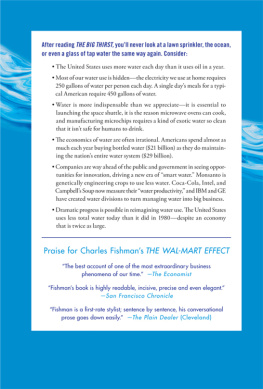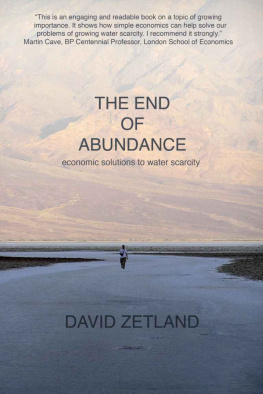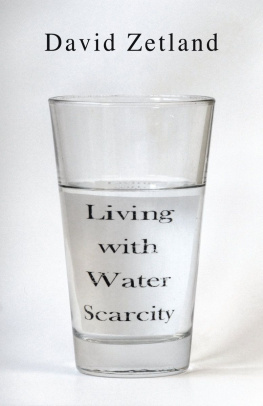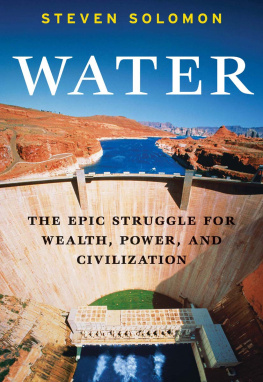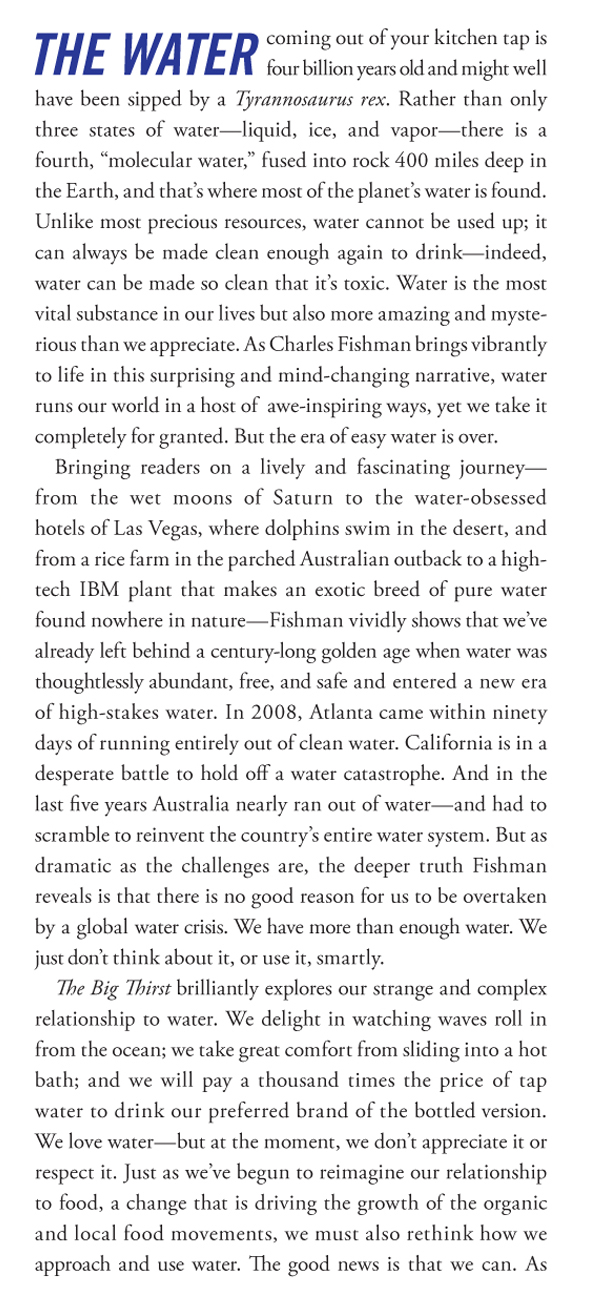


ALSO BY CHARLES FISHMAN
THE WAL-MART EFFECT
How the Worlds Most Powerful Company Really Works
and How Its Transforming the American Economy

A Division of Simon & Schuster, Inc.
1230 Avenue of the Americas
New York, NY 10020
www.SimonandSchuster.com
Copyright 2011 by Charles Fishman
All rights reserved, including the right to reproduce this book or portions thereof in any form whatsoever. For information address Free Press Subsidiary Rights Department, 1230 Avenue of the Americas, New York, NY 10020
First Free Press hardcover edition April 2011
FREE PRESS and colophon are trademarks of Simon & Schuster, Inc.
The Simon & Schuster Speakers Bureau can bring authors to your live event.
For more information or to book an event contact the Simon & Schuster Speakers Bureau
at 1-866-248-3049 or visit our website at www.simonspeakers.com .
Designed by Katy Riegel
Excerpt from Paige Taylor and Victoria Laurie,
How a Simple Flat Tyre Killed Artist and Bushman, The Australian , Jan. 16, 2007,
reprinted by permission of Paige Taylor and Victoria Laurie.
Manufactured in the United States of America
1 3 5 7 9 10 8 6 4 2
Library of Congress Cataloging-in-Publication Data
Fishman, Charles.
The big thirst: the secret life and turbulent future of water / Charles Fishman.
p. cm.
1. Water resources development. 2. Water supply. 3. Water use.
4. Water consumption. I. Title.
HD1691.F55 2011
333.91dc22 2010033989
ISBN 978-1-4391-0207-7
ISBN 978-1-4391-2493-2 (ebook)
For Trish,
like water, beautiful, mysterious, and essential
CONTENTS
1
The Revenge of Water
Water is H2O, hydrogen two parts, oxygen one,
But there is also a third thing, that makes it water
And nobody knows what it is.
D. H. Lawrence, The Third Thing
AT T MINUS 16 SECONDS in the launch sequence of NASAs space shuttle, the launch control computers would trigger the release of water from a 290-foot-high water tank that stands next to the launchpad at Floridas Kennedy Space Center. The two pipes that delivered the water to the pad are each seven feet in diameter. Just before the shuttles rocket motors ignited, 300,000 gallons of water would cascade across the base of the pad, eventually flowing at a rate of nearly a million gallons a minute. As the shuttle roared off the pad, the blast from its five engines poured down into the 2.5-million-pound cushion of water. The water was flowing so furiously it ran out nine seconds into liftoff.
The water actually had nothing to do with damping the heat or fire from the shuttles motors. It was a sound suppressant. The space shuttles rockets were so loud that without the sound-absorbing cushion of water, the roar from the engines would bounce off the metal and concrete base of the pad and ricochet back up. The sound waves would have torn the spacecraft apart before it was clear of the launch tower.
We use water to baptize our children, and we use it to launch the most advanced spacecraft ever created. Water creates both the hypnotic majesty of Niagara Falls and the miniature, untouchable filigree of each snowflake. Solid water tore open the steel hull of the Titanic ; liquid water sank her. You need great water to brew great coffee, you need great water to make great beer, you need pretty darn good water to make good concrete. Water adds the fun to water balloons, to a Slip N Slide, to a shower for two.
Water is both mythic and real. It manages to be at once part of the mystery of life and part of the routine of life. We can use water to wash our dishes and our dogs and our cars without giving it a second thought, but few of us can resist simply standing and watching breakers crash on the beach. Water has all kinds of associations and connections, implications and suggestiveness. It also has an indispensable practicality.
Water is the most familiar substance in our lives. It is also unquestionably the most important substance in our lives. Water vapor is the insulation in our atmosphere that makes Earth a comfortable place for us to live. Water drives our weather and shapes our geography. Water is the lubricant that allows the continents themselves to move. Water is the secret ingredient of our fuel-hungry society. The electricity you use at home each day requires 250 gallons of water per person, not just more than the actual water you use at home in the kitchen and the bathroom but two-and-a-half times more. That new flat-screen TV, it turns out, needs not just a wall outlet and a cable connection but also its own water supply to get going. Who would have guessed?
Water is also the secret ingredient in the computer chips that make possible everything from MRI machines to Twitter accounts. Indeed, from blue jeans to iPhones, from Kleenex to basmati rice to the steel in your Toyota Prius, every product of modern life is awash in water. The two-liter bottle of Coke in your refrigerator required five liters of water to produce.
Water is how we amuse ourselvesin the pool, at the beach, in a sauna, or on a sailboat. Water is a source of excitement on a white-water rafting trip, and an instinctive source of comfort in a steaming shower at the end of a long day.
Water is, quite literally, everywhere. When you take a carton of milk from the refrigerator and set it on the table, within a minute or two the outside is covered in a film of condensationwater that has migrated almost instantly from the air of the kitchen to the cold surface of the milk carton. Water infuses our language the way it does the air around us, the water references so common we dont even notice them: go with the flow, blow off steam, wet behind the ears. The mortgage crisis that triggered the Great Recession was caused, in part, by all those homes that ended up underwater.
And, of course, water is the most important substance in our lives because we ourselves are made mostly of watermen are typically 60 percent water, women are typically 55 percent water. A 150-pound man is 90 pounds of water (11 gallons).
Everything human beings do is, quite literally, a function of water, because every cell in our bodies is plumped full of it, and every cell is bathed in watery fluid. Blood is 83 percent water. Every heartbeat is mediated by chemicals in water; when we gaze at a starry night sky, the cells in our eyes execute all their seeing functions in water; thinking about water requires neurons filled with water.
Given that water is both the most familiar substance in our lives, and the most important substance in our lives, the really astonishing thing is that most of us dont think of ourselves as having a relationship to water. Its perfectly natural to talk about our relationship to our car or our relationship to food, our relationship to alcohol, or money, or to God.
Next page
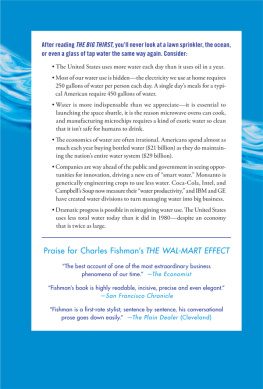
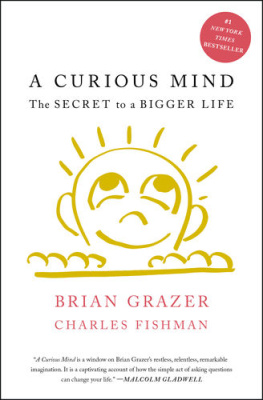
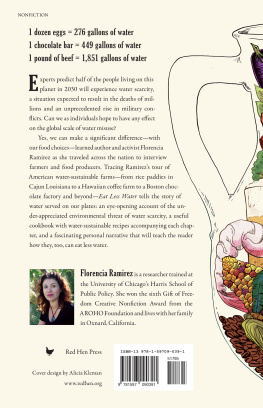

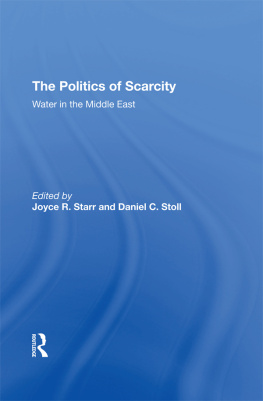

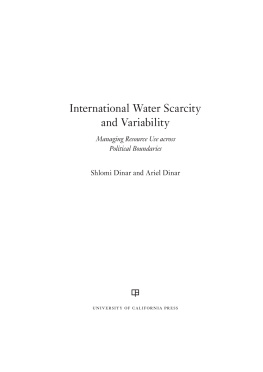

![David E Newton] - The global water crisis : a reference handbook](/uploads/posts/book/104432/thumbs/david-e-newton-the-global-water-crisis-a.jpg)
